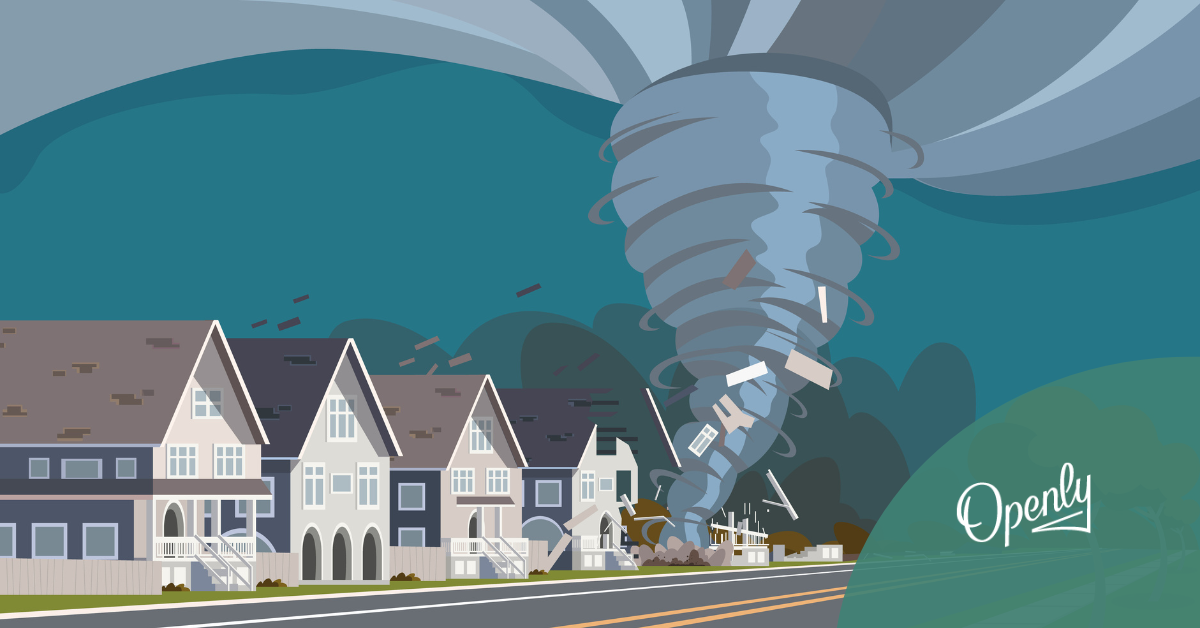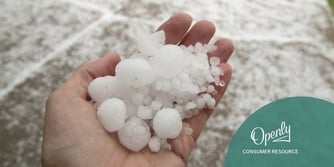Tornadoes are one of nature’s most dangerous forces, capable of unleashing devastating property damage in seconds. The sheer power of tornadoes can leave homes in ruins, scattering debris and upending lives.
While many homeowners operate under the assumption that their homeowners insurance automatically includes protection against such events, the reality can be more nuanced. Policy exclusions and windstorm deductibles can significantly complicate tornado insurance claims. This article aims to help homeowners understand their home insurance coverage concerning tornado damage.
At a glance:
- Standard homeowners insurance typically covers tornado damage, including structural repairs, personal property, and additional living costs.
- A thorough review of your home insurance policy and close attention to coverage limits is vital for ensuring homeowners have adequate protection.
- Selecting a homeowners policy with clear terms and considering extra coverage options can offer enhanced security against tornado-related risks.
When does homeowners insurance cover tornadoes?
Fortunately for homeowners, the majority of standard home insurance policies offer coverage for damage or loss caused by a tornado. This means that the direct impact of the tornado's powerful winds, as well as the resulting damage from associated events like hail and flying debris, are generally covered.
Covered perils and real-life examples
The destructive path of a tornado often involves a combination of forces. Beyond high winds, tornadoes can bring torrential rain, scatter debris with immense force, and cause tree damage to your property. A robust home insurance policy is designed to address these multifaceted damages.
- Dwelling (Coverage A)—This fundamental part of your homeowners policy provides protection for the physical structure of your house. If a tornado rips off your roof, collapses walls, or otherwise causes structural damage to your dwelling, this coverage typically kicks in to fund the necessary repairs or even a complete rebuild, up to your home coverage limits.
- Other Structures (Coverage B)—Homeowners insurance extends beyond the main house to include other structures on your property that aren't attached to your dwelling. This includes fences flattened by wind, sheds damaged or destroyed, and detached garages that have sustained damage.
- Personal Property (Coverage C)—Whether your furniture is crushed by falling debris, your electronics are damaged by rain entering through a compromised roof, or your belongings are lost entirely, personal property coverage helps to address these losses. This coverage usually operates on an actual cash value (ACV) or replacement cost (RCV) basis, depending on your specific policy.
- Loss of Use (Coverage D)—In the aftermath of a tornado, your home may be temporarily uninhabitable. Loss of use coverage, sometimes referred to as additional living expenses (ALE) coverage, helps cover the extra costs you incur while you can't live in your home. This can include expenses such as hotel stays, temporary rental costs, restaurant meals, and other necessary living expenses beyond your normal budget.
What tornado insurance coverage looks like
The quality and comprehensiveness of your home insurance policy can significantly influence your experience when facing tornado insurance claims.
Premium coverage with high limits
A robust policy offers a substantial threshold for rebuilding and repairs, often featuring a guaranteed replacement cost option. This provides greater financial security, ensuring you can fully restore your home to its pre-damage condition without worrying about depreciation or insufficient coverage limits.
Transparent, worry-free policies
The best insurance experiences come with clarity. What you see in your policy documents should be exactly what you get—transparency regarding your coverage from day one. This eliminates unwelcome surprises when you file a claim.
Flexible add-ons for peace of mind
To further enhance your protection against tornado-related damage and other potential issues, consider optional add-ons such as:
- Water backup coverage
- Equipment breakdown coverage
- Blanket personal property coverage
Common gaps in tornado insurance to watch for
In states prone to tornadoes, some home insurance providers implement separate windstorm deductibles. These deductibles, which can be a flat dollar amount or a percentage of your home coverage limits, apply specifically to wind-related damage. Understanding the amount of your windstorm deductible is critical, as it can significantly impact the amount you receive when you file an insurance claim. It’s also important to note that some policies might even have specific insurance exclusions related to certain types of wind damage.
Why understanding your home insurance policy is critical
The best way to avoid unwelcome surprises when filing a home insurance claim is to thoroughly review your insurance policy documents. Being well-informed about your coverage is the most effective way to ensure you're adequately protected when disaster strikes.
If after reviewing your home insurance policy, you still have questions, contact your local independent insurance agent. Their expertise can be leveraged to ensure you have adequate coverage for your unique circumstances.
How to file a claim after tornado damage
In the unfortunate event that your home sustains tornado damage, prompt and careful action is essential. Follow these five steps for an efficient claims experience:
- Ensure your safety—Your well-being is the top priority. Check for any injuries and ensure the immediate environment is safe before assessing the damage.
- Contact your insurance company—Notify your insurer as soon as it is safe, and report the damage to begin the claims process.
- Document everything—Before you start any cleanup, thoroughly document the damage with photos and videos. Capture damage to the dwelling, other structures, and personal property.
- Prevent further damage—Take reasonable steps to prevent further damage, such as covering broken windows or temporary repairs to prevent water intrusion. Keep records of any expenses incurred for these temporary repairs, as they may be reimbursable.
- Avoid permanent repairs—Refrain from making any permanent repairs until your insurance adjuster has had the opportunity to inspect the damage.
How to choose the right home insurance for you
Selecting the right homeowners insurance policy with adequate tornado coverage involves careful consideration of your individual needs and risk factors.
At Openly, we understand that your home is more than just a building; it's where memories are made and lives are lived. Our policyholders trust that their homes are in good hands, knowing that the insurance carriers we work with offer transparent coverage designed to protect them when they need it most.
We provide this information to help you understand insurance. Any coverage is subject to the terms of your policy. Please refer to your policy and declarations page for complete terms, conditions, exclusions and coverage details. Openly may provide links that lead to an external website that may promote goods and services that Openly does not endorse. We are not responsible for the content, claims, or representations made on the linked website. Please review their terms and policies before engaging with any offerings.




